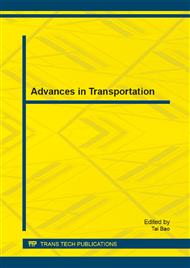p.399
p.405
p.410
p.415
p.422
p.427
p.433
p.437
p.443
Rent Pricing in Urban Rail Transit SBOT Projects under Uncertainties
Abstract:
SBOT (subsidize in building-operate-transfer) as a new BOT procurement model has been adopted in the construction of urban rail transit projects in China. Rent is one of the most important variables in arranging a SBOT contract which should determined considering the dynamic uncertainty arising from the volatility of the revenue generated by the project. Considering the integrated economy and social benefits of urban rail transit project, this paper presents a rent pricing model based on real option and optimal stopping theory on urban rail transit SBOT project. It derives the investment threshold to enter a SBOT contract under certain concession period and the feasible interval for rent. Finally, an example is referred to demonstrate the effectiveness of the proposed model.
Info:
Periodical:
Pages:
422-426
Citation:
Online since:
January 2014
Keywords:
Price:
Сopyright:
© 2014 Trans Tech Publications Ltd. All Rights Reserved
Share:
Citation:


